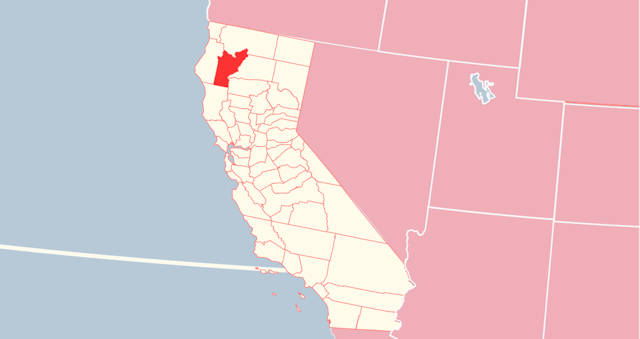Rehabs in Trinity
Trinity County is situated in the lower reaches of the Cascade Range in California. Its total area is 8,310 km2. This province doesn’t have incorporated cities. It consists of only communities. The county seat is Weaverville.
According to the census data, the population has increased by 1.44%-5.53% during the last 10 years, reaching 16,345 in 2021. With such a growing population, the residents yet are not free from substance use disorder in this province.
Along with the continuous high annual population growth, SUD has spread rapidly. It has reached over 40%, becoming one of the highest rates in this state. Thus, the local authorities did their best to assist the residents by opening quality Rehabs in Trinity.
Where to Get a Drug and Alcohol Evaluation?
Getting evaluation is possible at clinics, and specialty agenesis. Above all, there are different types of drug and alcohol evaluations. Then, it depends on the purpose and needs of a person.
The first step is checking the alcohol or drug use level. The DUI (Driving under the influence) test can be a court-ordered or criminal defense lawyer. Its main goal is thoroughly to evaluate the symptoms present in the client. The cause can be either a co-occurring problem or an addictive disease.
The second is NON-DUI. It is a voluntary one. This type is designed for NON-DUI offenders. That is, it includes people seeking help for themselves or their loved ones.
Generally, this is considered the first step toward recovery. After evaluation, your therapist prescribes you the treatment plan and you have to choose the facility.
Types of Substance Abuse Facilities
Trinity rehabs are known as providers of comprehensive programs. They specialize in the treatment of chemical misuse and opioid dependence. Correspondingly, their goal is to create a substance-free and client-centered environment.
Outpatient (OP)
Outpatient is a flexible level of care. That is, patients can take part in recovery courses by devoting only a few hours a week. However, it suits those who are less addicted to chemicals. It is also ideal for individuals completing IP or PHP.
Intensive outpatient (IOP)
As the second level of care, it is more intensive than OP. In other words, people have to give more hours at clinics. Thus, they spend nights and weekends at home.
IOP is a therapeutic-based option. It includes group, family, individual, trauma, forgiveness, and other therapies. Besides, it provides individual counseling, medication management, and other treatment options.
In short, it allows people to learn coping skills. It helps them to overcome stressful issues while living in the environment.
Inpatient (IP)
IP is designed for patients with severe addiction. It provides various healing services. In fact, it is 24-hour supervision that takes place under high-qualified experts. The minimum length of the recovery process lasts 30 days. Yet, depending on the client’s needs, it may last up to 90 days.
Lastly, patients learn how to achieve relapse prevention skills and stress management. It helps to keep sobriety for a long time.
Aftercare
After completing the course of cure, the effects of chemicals do not completely disappear. It requires an ongoing treatment that leads to a successful cure. It is possible only through a residential program that ends with aftercare. Meet some advantages of it:
- It offers necessary follow-up care to support healing progress.
- It facilitates the progression of your healing.
- Aftercare creates a complete support system for patients.
Specialty Addiction Center Types
Actually, they run programs that combine treatment for substance abuse and mental illness throughout the entire state. No matter their age or gender, these rehab facilities in California provide services for everyone at reasonable costs.
The price of Luxury Rehabilitation Centers
The prices of high-class facilities are different. Generally, it starts at $1,000 for a day. Yet, depending on many factors it may reach enormous amounts․
Clinics in this area provide a variety of payment options, including Medicaid and insurance. In some cases, you might even pay cash. If you are unable to pay for this, see if the center you want to enroll in offers a sliding scale or payment assistance.
Forcing Your Teen into Rehab
Actually, it is illegal for anyone to force another person to enroll in a recovery facility. However, when it comes to teenagers, their parents or legal guardians have the authority to compel them and are in charge of their health.
So, in order to help your teen, you should ask for professional assistance. The best course of action for intervention is known to experts like counselors, therapists, and psychologists.

